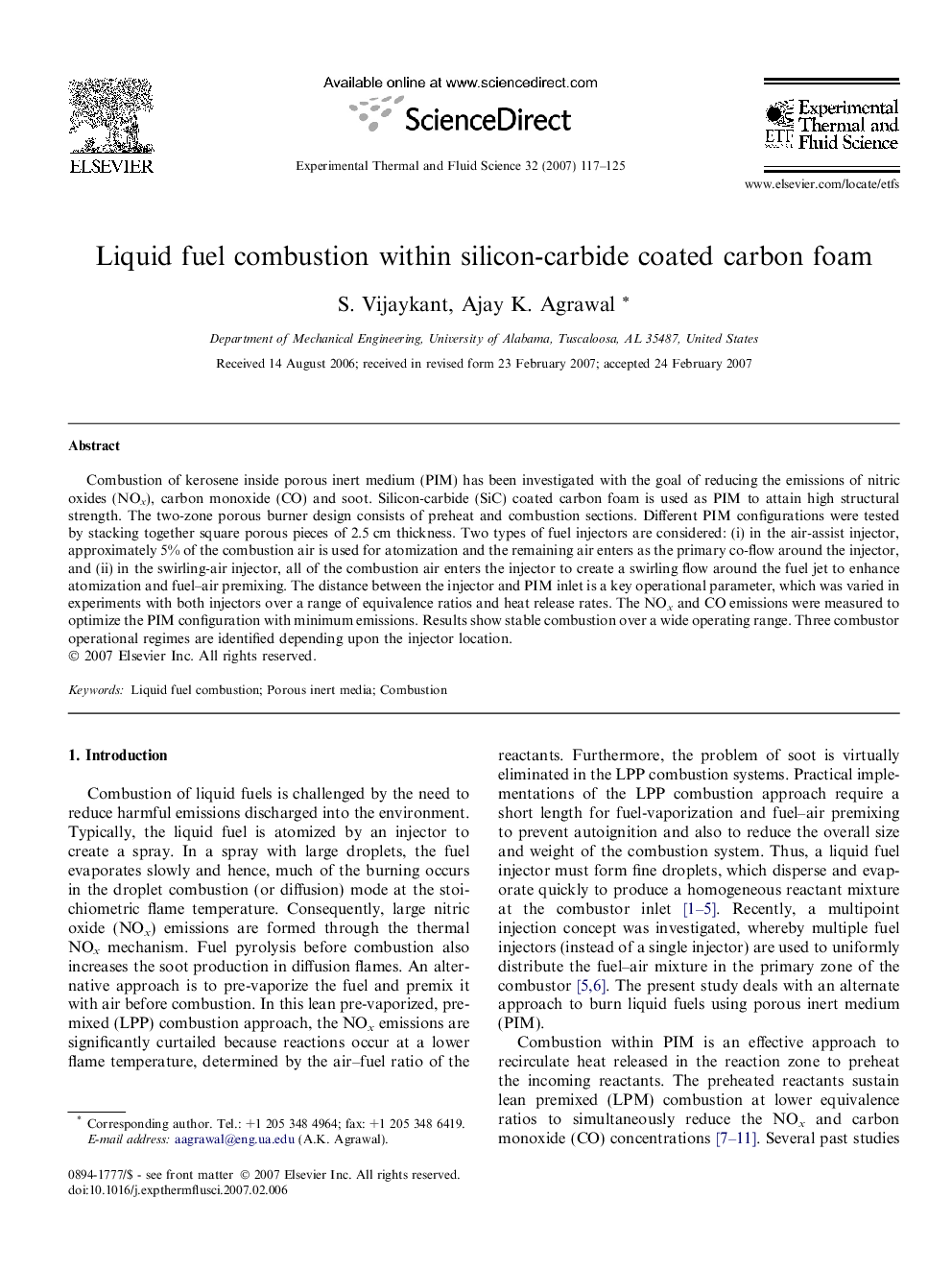| کد مقاله | کد نشریه | سال انتشار | مقاله انگلیسی | نسخه تمام متن |
|---|---|---|---|---|
| 652689 | 885039 | 2007 | 9 صفحه PDF | دانلود رایگان |

Combustion of kerosene inside porous inert medium (PIM) has been investigated with the goal of reducing the emissions of nitric oxides (NOx), carbon monoxide (CO) and soot. Silicon-carbide (SiC) coated carbon foam is used as PIM to attain high structural strength. The two-zone porous burner design consists of preheat and combustion sections. Different PIM configurations were tested by stacking together square porous pieces of 2.5 cm thickness. Two types of fuel injectors are considered: (i) in the air-assist injector, approximately 5% of the combustion air is used for atomization and the remaining air enters as the primary co-flow around the injector, and (ii) in the swirling-air injector, all of the combustion air enters the injector to create a swirling flow around the fuel jet to enhance atomization and fuel–air premixing. The distance between the injector and PIM inlet is a key operational parameter, which was varied in experiments with both injectors over a range of equivalence ratios and heat release rates. The NOx and CO emissions were measured to optimize the PIM configuration with minimum emissions. Results show stable combustion over a wide operating range. Three combustor operational regimes are identified depending upon the injector location.
Journal: Experimental Thermal and Fluid Science - Volume 32, Issue 1, October 2007, Pages 117–125